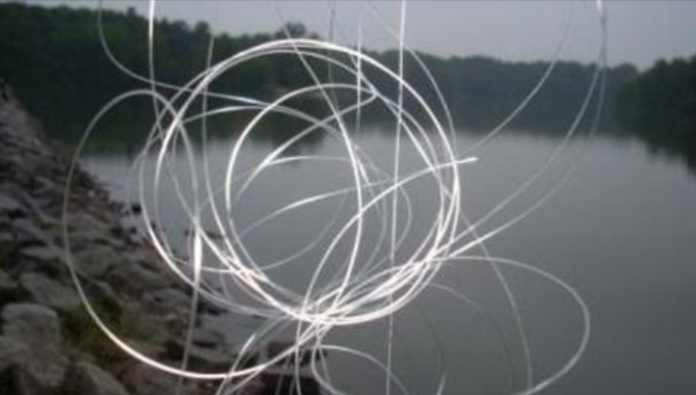Fly fishermen are masters of euphemism when it comes to tangled leaders. “Oh, look. I’ve got a wind knot,” an angler will say on the even the most flat-calm day. Sorry, my friend, but the wind had nothing to do with that knot, which was surely caused by a flaw in your casting motion. Such knots are usually caused by tailing loops (an easy-to-fix problem) or an overly violent acceleration or stop at one end of the casting motion. If you’re fishing a tandem rig, these flaws are compounded by the two flies’ tendency to spin around each other if given half a chance. But once you’ve made a mess of your leader, what do you do?
When it comes to tangled leaders, I’ve always divided anglers into two camps: cutters and untanglers. Cutters believe that anything but the simplest tangle isn’t worth bothering with, so instead they simply cut above the knot and retie the leader. If you’re good with leader knots and have an endless supply of monofilament or fluorocarbon, this might be a good strategy.
Untanglers—the group to which I belong—see every knot as a challenge to be met head-on. The exception to this rule is that rising fish demand a speedy solution, even if it means cutting a tangle you could undo if you had the time. Rising fish wait for no man.
That said, here are some strategies for detangling your leader.
- If you are fishing a tandem rig, immediately cut off the bottom fly at the hook bend of the top fly. If you don’t, you’ll find that the dropper fly keeps wrapping itself around stuff while you’re working on another part of the tangle.
- If you are fishing a bushy dry fly or a big streamer, you may want to cut that off, as well. Such a fly is hard to thread through small loops, which is frustrating. For most tangles, I prefer to leave smaller flies attached because they give you a visual reminder of where the end of the line is when you’re working farther up. Plus, the fly gives you some weight to work with when you’re trying to unspin parts of the tangle.
- The key thing to remember is this: Things wrap around other things. The vast majority of tangles aren’t really knots, in which the end of the line is actually interwoven with the standing line. What looks like a convoluted mess will become clearer when you start to look for how parts of the tangle are wrapping around each other. If you can unwrap them in the reverse order, you’re golden.
- Never pull on the ends of the tangle, even if you think you’re almost done solving it. This may serve to create a smaller, tighter tangle that’s even harder to undo.
- Many nippers have a small pick for poking the glue out of hook eyes. Use this to gently pull apart tight parts of the tangle or “wind knots.” If your nipper doesn’t offer this feature, attach a safety pin to your vest for easy access.
All of these strategies aside, the best way to deal with tangles is to try not to create them in the first place. That means you must work on becoming a better, smoother caster. Kent Klewein has written on this very subject in an excellent article over on Gink & Gasoline.
Credit: Source link






























